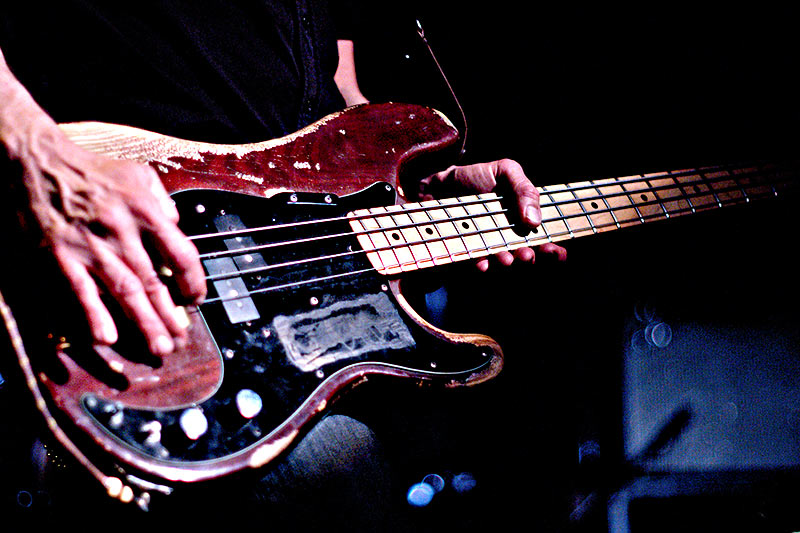Bass
the role of the bassist in a group

Often hidden behind a charismatic guitarist, an omnipresent singer, or a drummer who grabs the sonic spotlight, the bassist nonetheless plays an essential role in a band and in the musical delivery of a song. Try removing the bass from any theme or song, and you’ll hear that something is missing.
I often draw two parallels to illustrate the “super important” role of the bassist:
• The foundations of a building: If the construction structures are fragile, you can’t go further or higher. The foundations must be reinforced concrete!
• A bit like in a soccer team, they are the libero. Alongside their goalkeeper counterpart (the drummer), nothing should get through! These two positions must work in perfect harmony without trying to outshine each other. (On stage and in life, John Entwistle & Keith Moon were great friends outside of concerts and rehearsals…)
What is a bassist?
A bassist is the musician in the band who establishes the groove using a monophonic instrument (one note at a time) with 4 or 5 strings. Alongside the drums, percussion, rhythm guitar, or keyboards, they are part of the rhythm section. The bassist is primarily responsible for the rhythmic and harmonic foundations of the musical project, achieved through the use of low notes. It is their role to mainly emphasize the tonic notes and the chord colors used in the songs, based on the drummer’s patterns. Together, they form the backbone of the songs played by the band and must enable other musicians to know where they are at all times. To achieve this, the bassist uses clear and musical basslines perfectly synchronized with the drummer.
Random Tips
- Stay humble and avoid getting a big ego.
- Be altruistic and always think in terms of the team.
- Listen to what’s happening (the melodies of others), allowing for fills or variations without stepping on the singer or guitarist’s toes. Be careful not to reveal all your plans. Stay musically and stylistically consistent in your grooves and variations.
- Have harmonic knowledge. Analyze what’s happening in the song to make informed choices about notes and basslines.
- Always know where the downbeat and the beginning of the musical cycle (harmony & rhythm) are and communicate it through your playing. Avoid working against the rest of the band.
- Inspire confidence. Be enduring and solid.
- Be curious and open to other styles.
- Always land on your feet and start with simple basslines.
- Explore different techniques (thumb, fingers, slap, pick… Soon to be covered here ;).
- Know your fretboard, scales, and arpeggios well, allowing you to choose the right fingerings.
- For double bass players, prefer open strings (it’s more relaxing!).
- Position yourself close to the drummer and have the rest of the band in your line of sight.
- Practice with a metronome and systematically.
- Don’t be too overconfident on stage and in the studio.
- Keep your cool and be patient.
- Use your eyes and ears for timing.
- Provide a clean and audible amp sound.
- Learn a second instrument (piano, brass, vocals…).
Find all bass tablatures here: Bass tablatures

